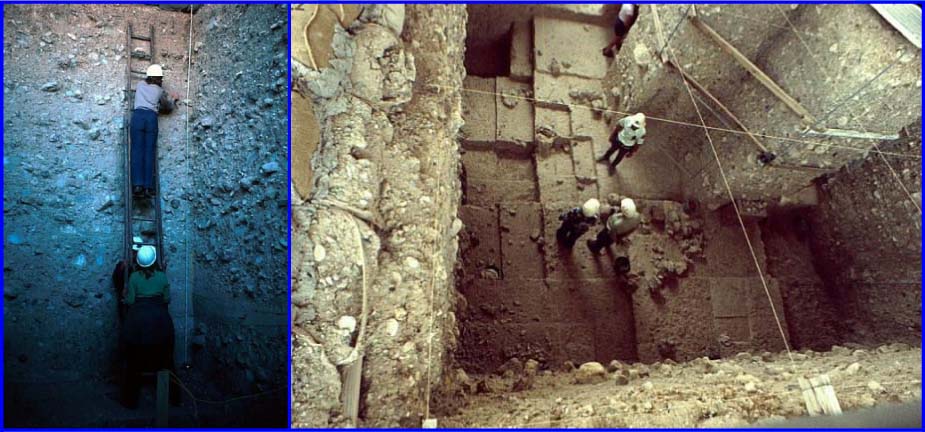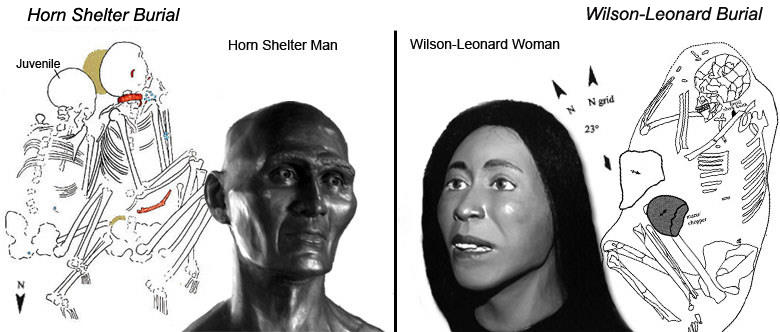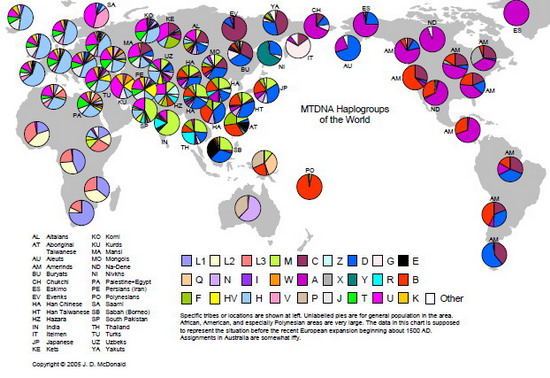Steroidal biomarker analysis of a 14,000 years old putative human coprolite from Paisley Cave, Oregon
Lipid
components of a putative human coprolite sample from the Paleoindian
site of Paisley Cave, Oregon (12,300 14C yr BP) were analyzed using
GC/MS to explore its origin in light of controversial data obtained from
mitochondrial DNA, cross-immunoelectrophoresis, trisodium phosphate
rehydration, and micromorphology analyses. Results show the predominant
presence of 5b-stigmastanol, the biomarker of herbivore fecal matter,
supporting micromorphological identification of the coprolite as
herbivore. This study highlights the potential of the biomarker approach
in coprolite studies devoted to research on the first presence of
humans in North America.
https://www.academia.edu/
Charlie Hatchett
Pre-Clovis Artifacts from Central Texas
http://www.pre-clovis.com
http://www.forum.pre-clovis.com
http://www.blog.pre-clovis.com
Rick Baudé Wrote:
-------------------------------------------------------
> I'm a little confused here Charlie, since you're
> one of the few people on the board that know
> something about ' pre-clovis are they saying that
> the results are inconclusive about whether it's a
> hominid or that it leans toward a hominid origin?
This statement in the paper sums up the authors' view
concerning one of the coprolites:
"...the predominant presence of 5b-stigmastanol, the
biomarker of
herbivore fecal matter, supporting micromorphological identification
of the coprolite as herbivore..."
As I noted above:
“…The sample in question is 1374-5/5D-31-2. mtDNA Hg B2 was
determined by Copenhagen SNaPshot, Copenhagen cloned, Uppsala Pyrosequenced,
Uppsala cloned and sequenced. The sample was dated to 12,400 ± 60 by Beta
Analytic Inc. and 12,275 ± 55 by Oxford University. Note that general mammalian
primer pair that targets a small fragment of the 16S ribosomal RNA was negative
for 1374-5/5D-31-2…”
Precluding positive DNA evidence for an herbivore (or any
other mammal besides human) source for coprolite sample 1374-5/5D-31-2.
There are 26 coprolites from Paisley Caves identified as
human, 7 are AMS dated older than Clovis (> 11,050 14C yr BP per Waters and Stafford
2007).
This statement in the paper sums up the authors' view
concerning older than Clovis occupation of the Americas:
“…Although some claims have been made for pre-Clovis sites
in North (e.g., Adovasio et al., 1999; Gilbert et al., 2008; Falk, 2004;
Jenkins et al., 2012) and South America (Dillehay, 2000; Guidon, 1989; Waters
and Stafford, 2007), the putative earliest sites that are typically mentioned
are still controversial (Fiedel, 2000; Kelly, 2003). The first clear evidence
of occupation appears much later and is related to the Clovis complex _11.000
to 10.800 14C yr BP (Waters and Stafford, 2007)…”
> BTW what are your thoughts on "Monte Verde"
and
> the "Kelp Highway" frankly I see no
impediments at
> all to either one.
Looking at Google earth and
> Monte Verde's present position I can see no major
> geographical barriers to entering the new world
> after all we're talking about bands of people that
> maybe numbered 25 to 50 people or so and there had
> to dozens to hundreds of different way to make it
> into the new world.
The vast majority of archeologists agree with Goebel et al.,
2008:
“…Perhaps the best candidate is the Monte Verde site
(Chile), which
contains clear artifacts in a sealed context and is dated to
14.6 ka (58).
Despite criticism (59), its acceptance by most
archaeologists means synchronous
and possibly earlier sites should exist in North America…”
mtDNA evidence is concordant with a Pacific coast migration
(See Hg B ):
Note the lack of mtDNA B in northern North America and
Siberia.
LGM sea levels:
Distribution of stemmed projectiles in the Americas, during
and before Clovis times, extends from Oregon to the tip of Chile, near the
Straits of Magellan:
In Siberia, the northern most dated stemmed points are found
at The Ushki Site on the Kamchatka Peninsula:
“…Here we present four new radiocarbon dates
(and two previously unpublished dates) on curated charcoal from hearth features
excavated at Ushki-1 more than 20 years ago. They indicate that these hearths
and associated dwelling features date to about 13,000 cal BP. We now know 15
radiocarbon dates on charcoal from a variety of features and profiles across
Ushki-1 and Ushki-5 that indicate the age of layer 7 is about 13,000 cal BP…”



























